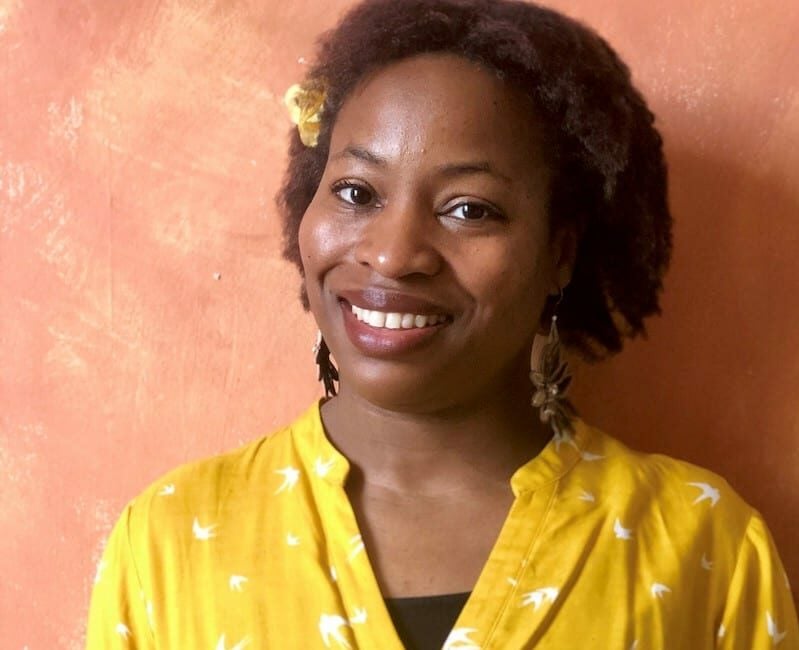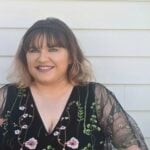When blogger and writer Uju Asika grew up in London, many parents raised their children to be “colorblind,” pretending to not notice race and how it plays into everyone’s lives. Asika, who was born in Nigeria, said she grew up with mixed messages on race. Her parents were, as she described, pro-Africa and pro-Black, but she experienced racism in her all-white school.
Family members encouraged Asika, now a mother of two boys who writes about parenting and family on the blog site Babes About Town, to write a book. “Bringing Up Race: How to Raise a Kind Child in a Prejudiced World” dives into the problem with “color blindness” and how to start conversations with your child about race, racism and world events.
This interview has been edited for brevity.
Indianapolis Recorder: Why doesn’t the “colorblind” method of raising children work?
Uju Asika: “I think that the main problem with color blindness was a sense of erasure. Like if you’re a person of African descent or Asian descent, you should feel proud of where you come from and be proud to express that without people pretending that skin tone doesn’t exist and it doesn’t affect how you’re treated in society. It’s so important for parents to teach their kids that diversity is something to be celebrated. You wouldn’t go out into the world and act like every tree or flower is the same color. It’s important to make these conversations a part of your child’s world, to normalize the conversation.
IR: Through your research, you found babies as young as 3 months old can recognize race. Is this just as simple as recognizing a difference in complexion?
UA: They’re just observing. It was surprising to me, as well, that babies that young can acknowledge race, but you can notice in the way they take in faces. You can see them concentrating on someone who looks like their primary care giver, or someone who looks different. It’s just curiosity. It’s leaning about the world and people, and there are no signs of a negative reaction to race at that age.
IR: So, around what age do children start to associate negative connotations to different races?
UA: Around 2-3 years old. It’s around that age that children can start to show signs of unconscious bias and separate themselves into in-groups and out-groups. There’s so much subconscious messaging around race that they can pick up, even if you’ve said nothing about race and raise your kid to be colorblind. They’re picking up information, so it’s really important for parents to be proactive.
IR: If you’re not having conversations with your kids about race, how should you start?
UA: I would say be proactive and don’t wait until you feel like, “Oh, no, my kid is learning something wrong.” Don’t assume that the predominate message your child is getting around race is positive, because, unfortunately, we live in a racist society. I recommend using books that celebrate diversity, and not just celebrate diversity, but books that include Black protagonists or Latino protagonists; people who aren’t necessarily the typical figure in mainstream books. It’s important to use those books to talk about differences in hair, color, language, and keep those conversations going.
IR: There was some controversy here in [Carmel] when critical race theory was proposed to the school’s curriculum. How should we go about informing people who may not be malicious, but don’t understand what critical race theory is or why it’s important to address systemic racism in schools?
UA: We can’t move our society forward without going backwards to look at education, how we’re taught about Black history and how relevant it is to American and global history. We’re having the same conversations here in England, and some people think if you focus on race, you make race a problem. But it’s important to normalize the conversation, and for Black kids and white kids, it’s important to teach that Black history didn’t start and end with slavery.
IR: How should parents balance what’s age appropriate to discuss with their children versus things they can’t shield them from? The video of George Floyd being murdered, for example, was difficult to avoid, but definitely not suitable for a child to see.
UA: For me, I avoid it. Still to this day, I haven’t seen the George Floyd video, but I’ve seen some of the images shared. Try to shield [children] as much as you can from the graphic and violent stuff. Nobody, especially not a child, needs to see people being brutalized or murdered. But if your children are older, they will hear about things on the news or in school. Use that as an opportunity to speak with them. Your child is going to feel anxious, especially if your child is Black, but reassure your child that they’re in a safe space and in general, the world is kind. You have to find the balance between educating them but not scaring them. Let them know what’s happening, be honest and at the same time, move them to action.
IR: After you’ve had conversations within your own home about race, what’s the next step?
UA: If you’ve read a book that has given you some tools, use those tools. If you read a book that transformed your conversations, take it into a school and ask about getting it put in the library, or start a book club. It’s not just about reading a book. Move these things into your community, and definitely keep the conversations going and evolving in your home. If you want your kid to be anti-racist, you need to be anti-racist.
Contact staff writer Breanna Cooper at 317-762-7848. Follow her on Twitter @BreannaNCooper.











